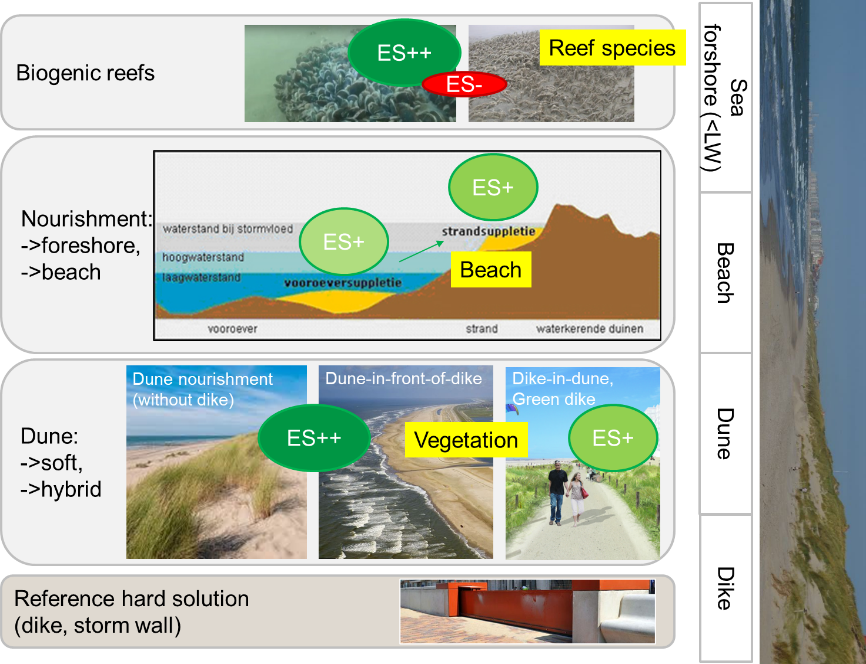A. Boerema1*, K. Van der Biest2, A. Pieterse1 and A. Bolle1
1 IMDC
2 University of Antwerp
*corresponding author: This email address is being protected from spambots. You need JavaScript enabled to view it.
Introduction
Mainstreaming nature-based solutions into coastal management and policy making requires an in depth understanding of the coastal flood defence contribution of such measures as well as their additional societal benefits. Our aim was to demonstrate the added value of nature-based measures in the land-sea interaction zone of the Belgian coast.
Methods
We investigated six nature-based coastal solutions (Figure 1) compared with a hard reference scenario with a grey dike. First, the coastal Safety Tool, developed by IMDC, was applied to assess the magnitude of each measure required to protect against a sea level rise of +1.5m. Second, for each scenario, a series of ecological and cultural services were quantified besides coastal safety. Third, our evaluation was presented to local governments to start a discussion about their (practical) considerations or possible resistance for implementing nature-based measures.
Results
Although not all coastal nature-based measures provide full coastal protection, we found evidence of the added value of combining soft and hard measures (resulting in a reduction of the required dike height). Furthermore, we found evidence that the required dune height can be 1 meter lower than the required dike height in order to protect against the same rise in sea level of +1,5m.
The ecosystem services analysis showed the added value of all nature-based measures compared to the hard reference dike (Figure 1), with moderate added benefits for sand measures (nourishments) and the highest gains for measures with plants and animal species (dune vegetation, reef species).
From our discussions with local governments, we learned that there is an overall willingness to rethink today's coastline but only if all current user functions are integrated, with many practical considerations (e.g. accessibility, maintenance), and much attention for communication to the local stakeholders.

Figure 1: Overview of the range of nature-based coastal solutions and their contribution to ecosystem services (ES) compared to the reference hard solution
Acknowledgement
The authors want to acknowledge the Flemish department of Environment & Spatial Development (Belgium) to finance this study as part of the European Interreg 2 Seas SARCC project (2019-2023). We also thank the University of Antwerp for its support on the ecosystem services quantification part.










